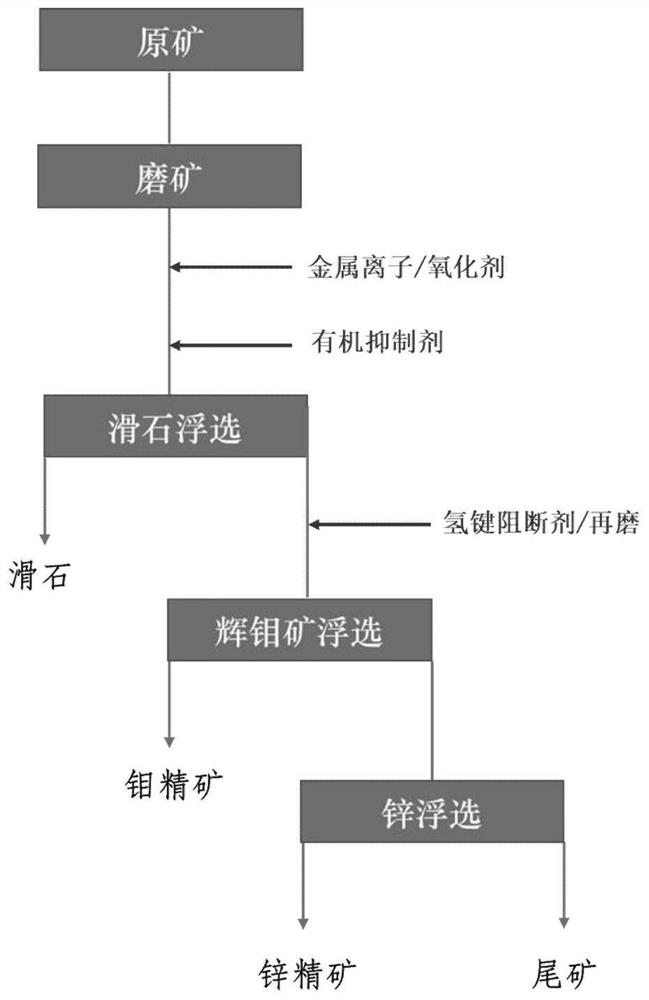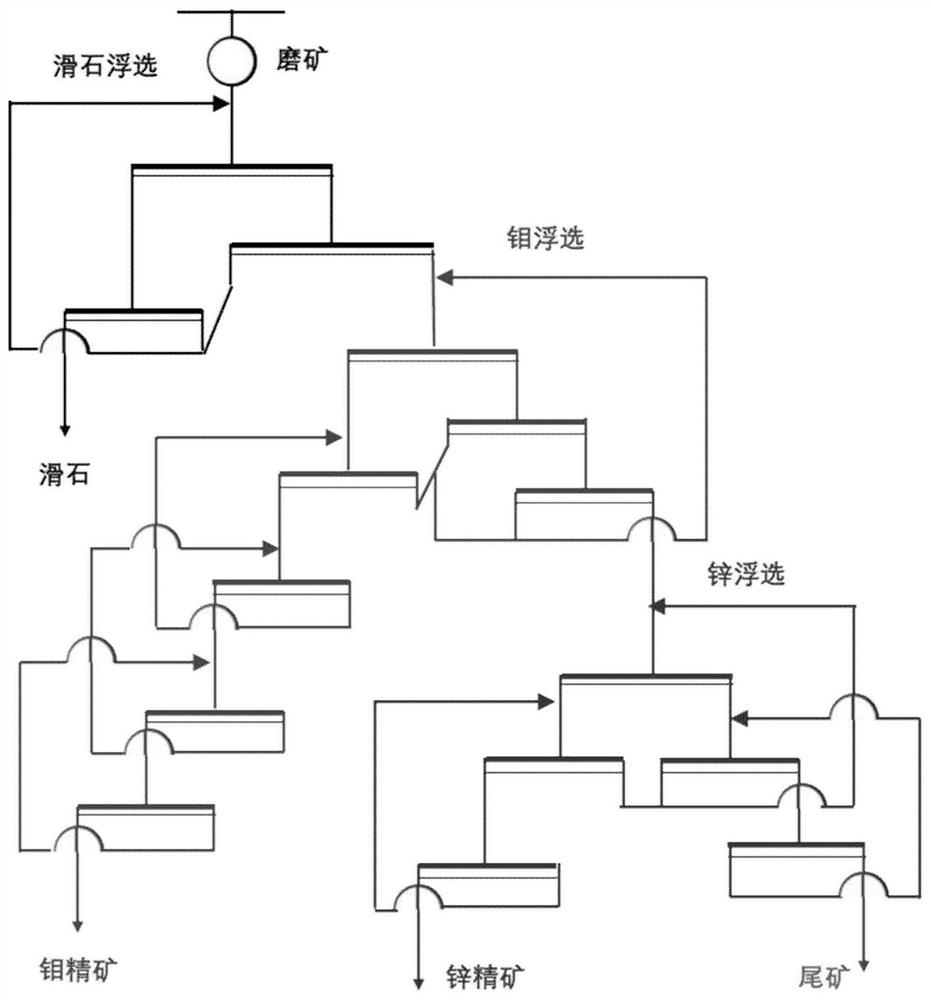Flotation method for talc-containing molybdenum-zinc ore
A talc-molybdenum and zinc ore technology, applied in flotation, solid separation and other directions, can solve the problems of difficult to achieve selective separation, affecting concentrate grade and smelting product quality, easy entry of talc, etc. Guaranteed grade and recovery rate, and the effect of improving recovery rate
- Summary
- Abstract
- Description
- Claims
- Application Information
AI Technical Summary
Problems solved by technology
Method used
Image
Examples
Embodiment 1-5
[0033] A flotation study was carried out on a talc-bearing molybdenum-zinc ore in Fujian, in which the main metal minerals were molybdenite, sphalerite and pyrrhotite, the grade of Mo was 0.13%, the grade of Zn was 2.3%, the grade of S was 6.4%, and the rest Metal content is low. The gangue minerals are mainly calcite, quartz and talc, among which the talc content is as high as 7.4%.
[0034] The separation of talc from molybdenite and sphalerite is achieved by using a new combination inhibitor of molybdenite and sphalerite, and the flotation method of re-election of molybdenite is realized by using a hydrogen bond blocker, such as Figure 1-2 As shown, the specific steps are as follows:
[0035] (1) Grinding the raw ore in a mill to -200 mesh accounts for 78% to obtain ore pulp;
[0036] (2) Add Cu to the slurry 2+ , Zn 2+ or Ca 2+ (20-50g / t) for pretreatment of the mineral surface, the treatment time is 3-5min, then add pectin (150-200g / t) as an organic inhibitor, and c...
Embodiment 1
[0050] Comparing Example 1 with Comparative Example 1, it is found that if the organic inhibitors adsorbed on the surface of molybdenite and sphalerite in the talc flotation stage are not treated, their flotation behavior in the subsequent flotation stage will be greatly affected. The flotation recovery rates of molybdenum concentrate and zinc concentrate decreased significantly, being 70.3% and 83.8% respectively. After 30g / t urea was used as a hydrogen bond blocker to destroy the adsorption of organic inhibitors on the mineral surface, the recovery rate was significantly improved.
[0051] Combinations of copper ions with different types of organic inhibitors (pectin, carboxymethylcellulose, polyacrylamide) have different inhibitory effects on talc, molybdenite and sphalerite. The combination of copper ion + carboxymethyl cellulose has a certain inhibitory effect on talc, so the removal rate of talc is as low as 74.5%. The combination of copper ion + pectin and copper ion + ...
PUM
 Login to View More
Login to View More Abstract
Description
Claims
Application Information
 Login to View More
Login to View More - R&D
- Intellectual Property
- Life Sciences
- Materials
- Tech Scout
- Unparalleled Data Quality
- Higher Quality Content
- 60% Fewer Hallucinations
Browse by: Latest US Patents, China's latest patents, Technical Efficacy Thesaurus, Application Domain, Technology Topic, Popular Technical Reports.
© 2025 PatSnap. All rights reserved.Legal|Privacy policy|Modern Slavery Act Transparency Statement|Sitemap|About US| Contact US: help@patsnap.com



